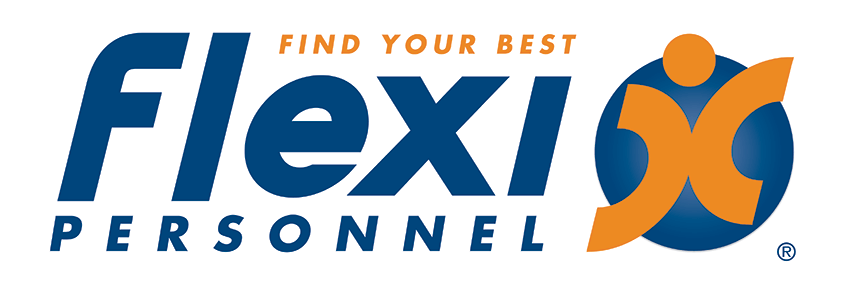
Best Opportunities for Recruitment through Social Media
Social media has revolutionised the communication landscape, both within our private lives and increasingly at work as well. Communication through social media involves the use of internet based platforms that allows individuals to set up personal profiles, connect with people they know and engage with each other via individual posts or commenting on each other’s posts. Some also have the option to link email and instant messaging.
Keep reading to find out how you can approach recruitment through social media.
Your social media presence
Having a presence on social media is not negotiable for organisations in today’s business world with 90% of brands having profiles across the most popular of social media platforms. Increasingly, jobseekers are using social media sites to further their employment search. A study conducted by Nigel Wright (2011) Recruitment found that more than half of UK job seekers use social media, with 18% doing it through Facebook and 31% via LinkedIn. Although the trend is true for all age groups, amongst younger people the statistic is a bigger proportion. A survey carried out by Potential Park in 2011 of over 30,000 graduates showed that students and early career professionals worldwide found that in Europe, almost 100 per cent of survey participants would like to interact with employers online.
Recruitment via social media has its own challenges and opportunities. The obvious factor to be mindful of is not focusing too much attention on an applicant’s personal profile such as their marital status or age this could be counted as discrimination if the candidate proves you used it for decision making. Also understand that while you posting on your various platforms, so are others. Your updates could easily be lost amongst an ever changing newsfeed, with no real clue as to who is actually reading what you are posting.
Making use of social media for recruitment
On the other hand social media recruitment could be the game changer for your business. Not only is it cost-effective, but you are in complete control of how you are represented to the wider audience, showcasing your business in a way that people can connect and decide if they are a match for your organisation. Furthermore there is a better chance of referrals via social media; it is not always dependant on the actual candidate seeing the original post, there is potential for others to ‘share’ ‘retweet’ or ‘like’ job postings increasing visibility. Although you may not be regularly posting jobs on social media, your other content will help to develop a relationship with talented professionals, making it easier to approach them when vacancies arise.
For small business social media holds even more appeal. An increase in demand usually means having to hire staff, often at short notice and with little time to evaluate applications. Social media assists with reducing recruitment costs but some specific social recruiting software is sophisticated enough to do the CV sifting for you, leaving you with a list of potentials.
Here we take a look at different social media platforms and social recruiting software and give a brief explanation on how each works:

Still the most popular and well known social media channel there is. Facebook has got better at making sure it is the platform of choice for businesses who are looking to set up, grow and search for potential applicants. The simplest way to widen your reach is to invite people to like your page. Their ‘likes’ will be viewed by others who may follow suit and the domino effect continues. Facebook also provides extra features that require payment; payment will get you a higher ranking on Facebook searches.
Hiring staff is partly about attitude. Facebook is a great tool to determine someone’s attitude and whether they would be a good fit for your business and no its not by looking at the photos but check their timeline and how they engage with Facebook friends and the language and tone of their comments. Facebook photos have a disclaimer attached – don’t take them as face value. Be mindful of the purpose of the site and that people use it predominantly for social activity.
Twitter may be limited to only 140 characters per ‘tweet’ but herein lies its charm and there is the added advantage of anyone being able to see your Twitter messages, anywhere at anytime. However as explained previously there is no guarantee that your message is being seen by the right people so give them a helping hand. Affix hashtags to your tweets that will help jobseekers find you. For example #jobs #engineers #wanted #nowhiring #engineering. There are also hashtag identified jobchats that take place regularly that by taking part will increase the reach of your organisation and get you noticed by other firms as well as potential applicants. Twitter chats are ideal for recruiting beyond the passive pool of jobseekers.
Use Twitter to proactively find the ideal match for your business. As well as their brief bio, take a look at their tweets – are they just simple updates related to their day or are they retweeting interesting articles and sharing helpful links. Have a look at who they follow on Twitter (you can tell a lot about a person from the company they keep) and if they are following industry leaders, visionaries, media sources, notable writers and authors.
Home of professional networking, think of it as Facebook but for professionals. Develop your profile with rich keywords, making it easier for candidates to find you. Your profile needs to be inspiring, informative and encourage people to follow you – your profile could be the deal breaker for someone who is compiling a list of companies they want to work for. LinkedIn allows you to post jobs online for a fee – giving you the power of its networks to get you the results you are looking for.
By building up a qualified community of individuals who follow your company page on LinkedIn, you can be sure to attract candidates who like you are invested in your line of work. As well as sharing interesting content and job opening, take part in discussions, respond to queries in the Answers section and join groups.
When actively recruiting, search out those candidates who have well written, interesting profiles and who have excellent recommendations and membership of relevant industry groups. Recommendations can work both ways, you can canvas references from recommenders you trust and ask current and past employees to reach out to their networks promoting your business and advertising the opportunity.
All about images and video content which can be shared and disseminated via hashtags and similar to Facebook with its likes. As part of your recruitment strategy share pictures of your workplace, events taking place, new recruits and of course job ad. Likewise you can use Instagram to search for candidates with particular skills. Many users of this social media platform do so to show off, especially if they involved in the creative industry.
Social recruiting software aims to do lot of the above for you, leveraging your social media relationships to find and recruit the best talent. There are a plethora of such platforms available and it is about weighing up which one will work best for you and your business requirements.






Leave a Reply
You must be logged in to post a comment.